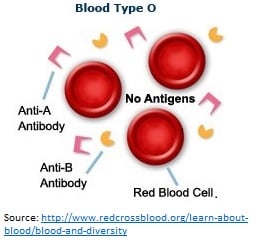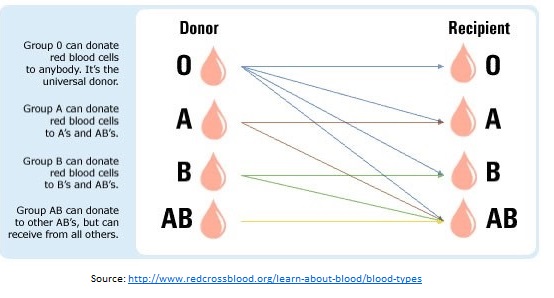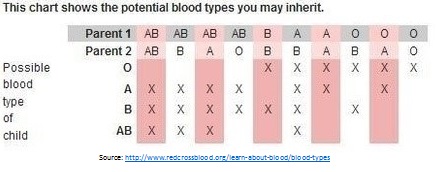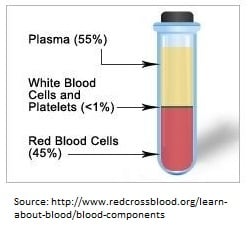Blood is a bodily fluid that has a special function. Made up of a combination of watery fluid called plasma, and the blood cells that float in it, the main purpose of blood is to supply essential nutrients and substances such as oxygen, sugar and hormones, to our cells. Blood also carries waste from our cells to the orifices and channels that expel waste, in the form of urine, faeces, sweat and carbon dioxide. Too much waste in our blood causes illnesses and health risks. This, and the fact that blood helps nourish our cells with vital elements such as oxygen, is what makes blood so vital.
In humans and certain other vertebrates, plasma makes up 55 percent of the total volume of blood. The components of plasma are primarily water, glucose, carbon dioxide, hormones and protein.
Blood cells are as important to our bodies as blood is. There are red blood cells, white blood cells and platelets. Red blood cells are known as RBC or erythrocytes. They are the most abundant in the blood and carry the vital protein haemoglobin in them. Haemoglobin, which contains iron, carries oxygen from our lungs to all other cells. When haemoglobin has been fully oxygenated, it is in bright red shade as we normally see blood. Red blood cells have a life span of four months, after which they are destroyed by the spleen. White blood cells (WBC), also called leukocytes, are as equally important, in their job as the cells of our immune system. WBC defend our body when micro-organisms and foreign bodies invade us. WBC also fight abnormal cells such as cancer cells. They have the ability to move in and out of the bloodstream to reach the areas of our body where the micro-organisms’ or by foreign bodies invasion have occurred.
The last type of blood cells is called platelets. They help our blood to clot, or coagulate. When we have a cut or injury, bleeding occurs, platelets together with some protein called clotting factors help the blood to clot. Without clotting, we would bleed excessively, eventually bleeding to death.
Blood also helps to regulate our body temperature. When we exercise or when the room temperature is high, our blood vessels expand, and there is greater blood flow to the skin. This increases heat loss, effectively reducing our core temperature. In addition to the different components of blood (plasma, blood cells, platelets, water) blood itself has different types determined by genetics (genotype) (http://www.medicalnewstoday.com/articles/196001.php).
Some people will already be aware of their blood types, such as Type A, Type B or Type O. There are, in fact, eight common genotypes of blood. What differentiate each of them is the amount of certain antigens, or whether the specific antigen is present in the blood type.
Note: An antigen is a protein substance that can cause an immune reaction in your plasma. If a certain antigen is foreign to your body, your immune system will trigger a reaction to destroy it in order to protect you.
For example, if your blood type is Type O, and you require a blood transfusion, and the medical provider accidentally gives you a Type A blood, the Type A blood may contain a certain antigen which may cause your immune system to destroy it as your immune system sees that antigen as a foreign body. Even though there are eight common blood types, these are categorised into four major groups, which are the Type A, Type B, Type AB and Type O (http://www.redcrossblood.org/learn-about-blood/blood-types). Your blood type is determined by the inherited genes from your parents as demonstrated in the following table.
Blood, like other parts of the body, can be susceptible to disease and complications. Common blood disorders include anaemia (this is when you do not have enough red blood cells), thalassemia (inherited disorder with abnormal red blood cells that lyse continuously causing anaemia), haemophilia (an inherited disorder that does not allow your blood to clot due to lack of a clotting factor, thereby increased risk of continuous bleeding during an injury) or thrombosis (these are blood clots formed inside of arteries or veins and cause blockage, a common example is heart attack). There are also blood cancers such as leukaemia, lymphoma and myeloma. If you are healthy and not affected with these conditions, we like to remind you that there are many others who do. This is where blood donation becomes crucial.
From donated blood, patients may receive a pint of whole blood or a specific component of the blood needed to treat their particular condition. Up to four components can be derived from donated whole blood.
This approach to treatment, referred to as blood component therapy, allows several patients to benefit from one pint of donated whole blood (http://www.redcrossblood.org/learn-about-blood/blood-components). Donated whole blood is helpful in people who have suffered major trauma (such as road accidents), children, pregnant women and those undergoing major surgery. Hospitals and clinics will always need supplies of blood for use in blood transfusions. A blood transfusion can mean life and death for some patients in critical conditions.
While it is a noble and worthwhile cause to donate blood (there are unexpected health benefits to the donor, too) there are several factors to consider before you decide to donate blood. It is generally recommended that a donor be above 16 years of age, and if you are a first time donor, you should be younger than 71 years of age. If, however, you are an existing donor, you can continue to donate blood until your 81st birthday. Donors should ideally weigh 50 kgs and above. Furthermore, if you have had a few alcoholic drinks 24 hours before the day you intend to donate blood, there are institutions that will not accept your blood donation. This has to do with clarity of mind in answering questions about your health. Likewise, if you are taking antibiotics, doctors may need to know the reasons for antibiotics before you are considered eligible for blood donation. And for safety reasons, those who have suffered from angina or certain other heart- or organ-related conditions may not be eligible. Blood from donations are always thoroughly tested for conditions such as HIV and hepatitis B infections. This is to ensure that transmissible and infectious diseases are not passed on to patients receiving the blood transfusions (http://www.donateblood.com.au/eligibility/blood-testing-and-safety). If you have checked with your doctor and he/she has given you the all-clear to donate blood, there are several other reminders to help you and the donation process. Firstly, eating and sleeping well prior to the donation day are important. Eating regular meals will help you avoid a feeling of light-headedness after donating. Good sleep will help boost your well-being. You should also avoid alcohol, but more importantly, it is crucial that you stay well-hydrated by consuming plenty of non-alcoholic fluids the day before. Exercising the day before is not discouraged but you must caution against over-doing it. Likewise, you must watch against exercising too soon after donating; usually a short period of rest is recommended after donating, before resuming your regular workout. Secondly, on the day of blood donation, you should wear loose clothing (so that you’ll be comfortable). Tight clothings and sleeves may make it more inconvenient for the medical staff to locate your vein and to prick you. And, finally, nervousness or some mild anxiety is normal for first-time donors, so if it makes you feel more comfortable, bring along a friend or your favourite music on your music player with ear phones.
At the end of the day donating blood costs little to nothing to us, the healthy ones, but it means life and death to the recipients.
This article is brought to you by IMU Healthcare.














Mauricio Grist
You got a very wonderful website, Gladiolus I noticed it through yahoo.